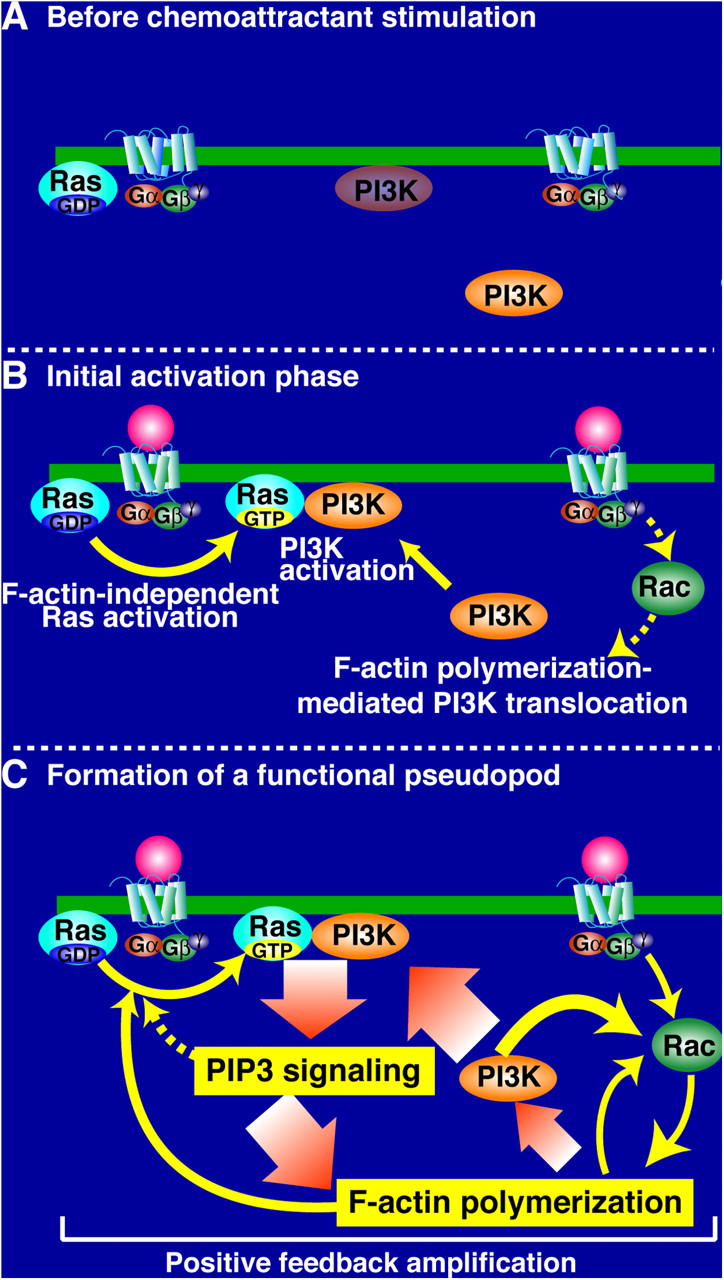Figure 8.

Model for the spatial and temporal regulation of Ras-induced chemotaxis. A model illustrating the intracellular signaling leading to local PI(3,4,5)P3 production is shown. (A) Resting cells with a basal level of PI3K at the plasma membrane. (B) The chemoattractant locally activates Ras at the presumptive leading edge (site closest to the chemoattractant source), where Ras then locally activates PI3K. There is a local polymerization of F-actin at the presumptive leading edge, which is partially Ras/PI3K independent, presumably controlled by Rho GTPase, WASP/SCAR, and Arp2/3. Our data suggest that the F-actin mediates PI3K translocation. (C) Locally produced PI(3,4,5)P3 induces further F-actin polymerization by activating downstream effectors, which would enhance the recruitment of PI3K to the membrane.
